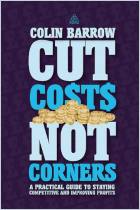Melden Sie sich bei getAbstract an, um die Zusammenfassung zu erhalten.

Melden Sie sich bei getAbstract an, um die Zusammenfassung zu erhalten.
Vinay Couto, John Plansky and Deniz Caglar
Fit for Growth
A Guide to Strategic Cost Cutting, Restructuring, and Renewal
Wiley, 2017
Was ist drin?
With their bloated budgets and confused strategies, many companies need to get in shape.
Recommendation
At too many companies, managers tolerate bulging budgets and fuzzy goals. But out-of-shape organizations put themselves in grave peril, argue PricewaterhouseCoopers consultants Vinay Couto, John Plansky and Deniz Caglar. In their useful guide – something of a workout plan for bloated bureaucracies – the authors exhort managers to trim the fat and stay motivated to keep it off, even after the hard work appears to be over. Their instruction manual offers clear, step-by-step directions for tackling issues such as outsourcing and budgeting. However, some readers may sometimes wish for more specific examples. Nevertheless, getAbstract recommends this overview to managers in large organizations.
Summary
About the Authors
Vinay Couto, John Plansky and Deniz Caglar are principals at PricewaterhouseCoopers. Couto has worked with companies in a variety of industries; Caglar specializes in outsourcing. Both are based in Chicago. Plansky, who is based in Boston, focuses on information technology.























Comment on this summary